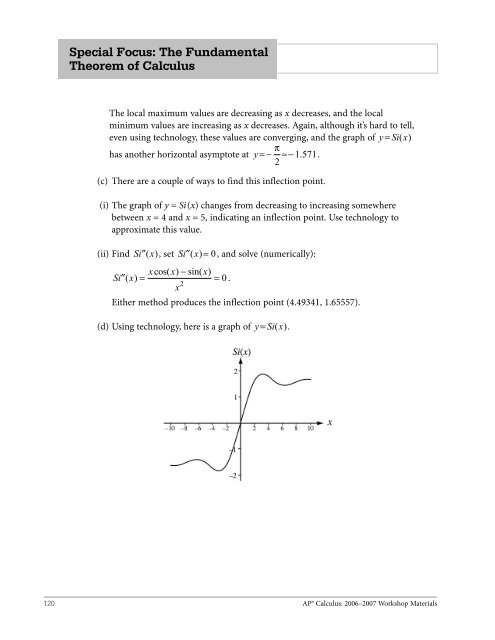AP Calculus
Calculus_SF_Theorem
Calculus_SF_Theorem
Create successful ePaper yourself
Turn your PDF publications into a flip-book with our unique Google optimized e-Paper software.
Special Focus: The Fundamental<br />
Theorem of <strong>Calculus</strong><br />
The local maximum values are decreasing as x decreases, and the local<br />
minimum values are increasing as x decreases. Again, although it’s hard to tell,<br />
even using technology, these values are converging, and the graph of y = Si( x)<br />
π<br />
has another horizontal asymptote at y = − ≈− 1. 571.<br />
2<br />
(c) There are a couple of ways to find this inflection point.<br />
(i) The graph of y = Si(x) changes from decreasing to increasing somewhere<br />
between x = 4 and x = 5, indicating an inflection point. Use technology to<br />
approximate this value.<br />
(ii) Find Si′′( x), set Si′′ ( x) = 0, and solve (numerically):<br />
xcos( x) − sin( x)<br />
Si′′ ( x)<br />
=<br />
= 0 .<br />
2<br />
x<br />
Either method produces the inflection point (4.49341, 1.65557).<br />
(d) Using technology, here is a graph of y = Si( x).<br />
120<br />
<strong>AP</strong>® <strong>Calculus</strong>: 2006–2007 Workshop Materials


